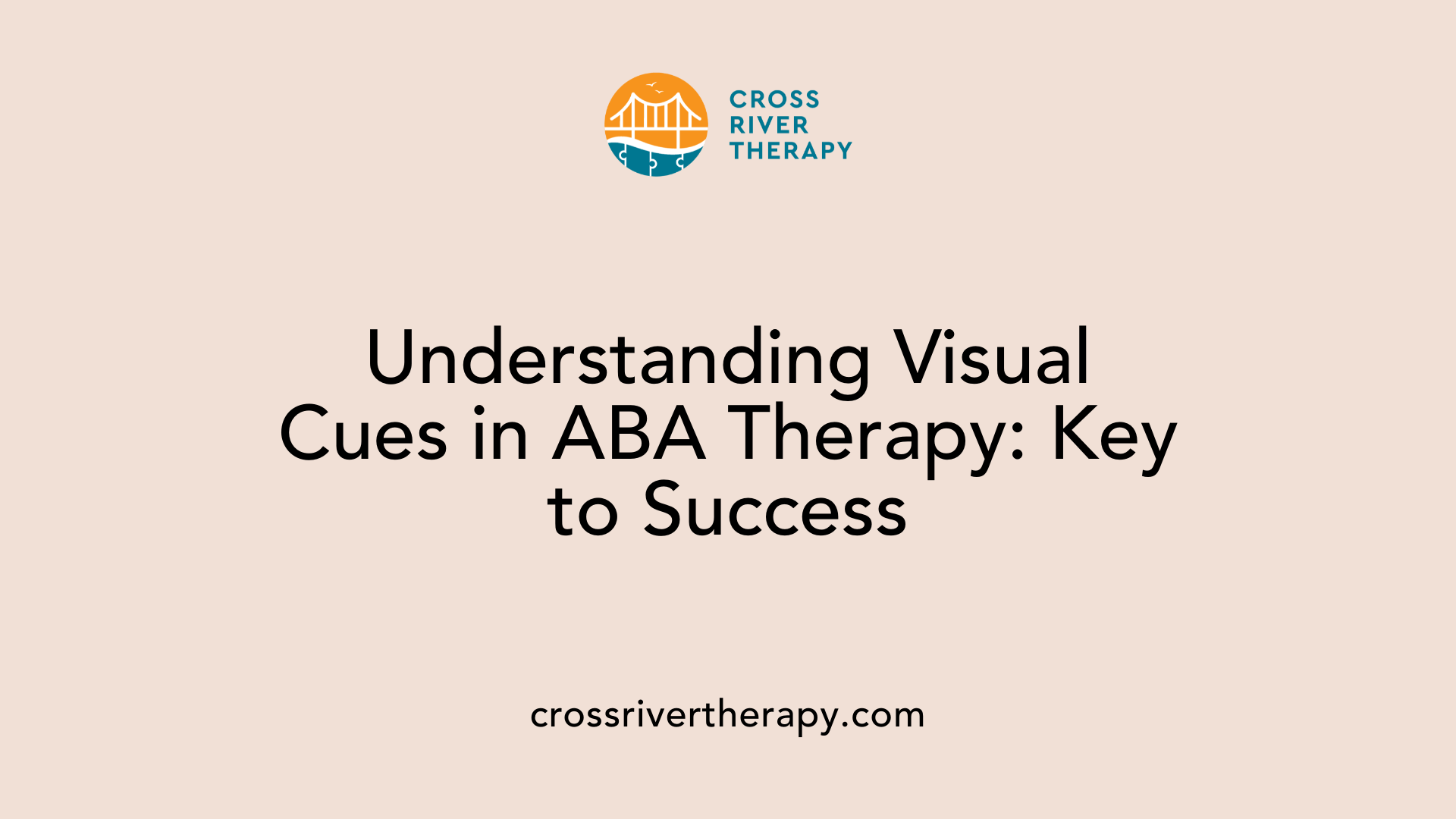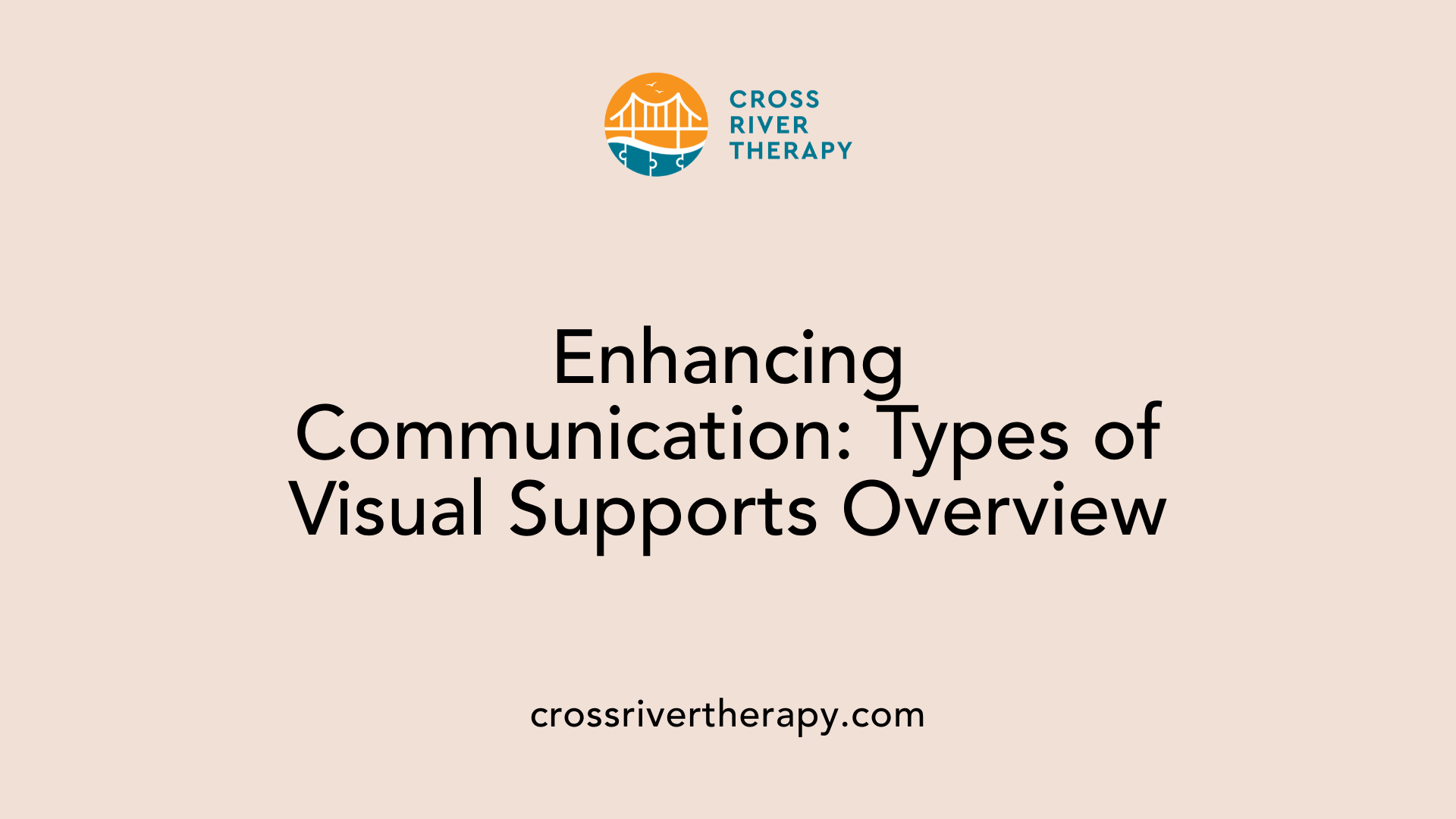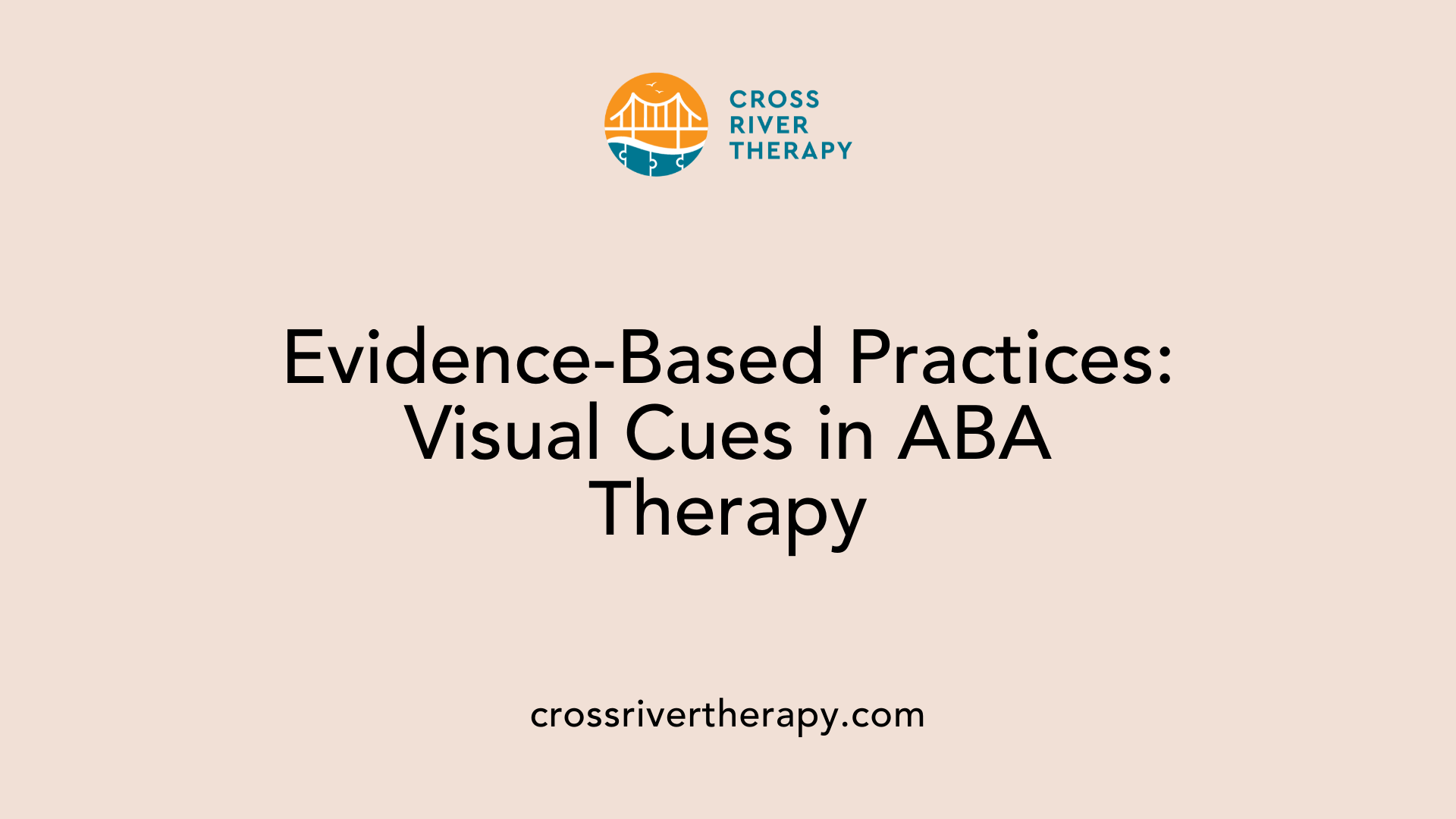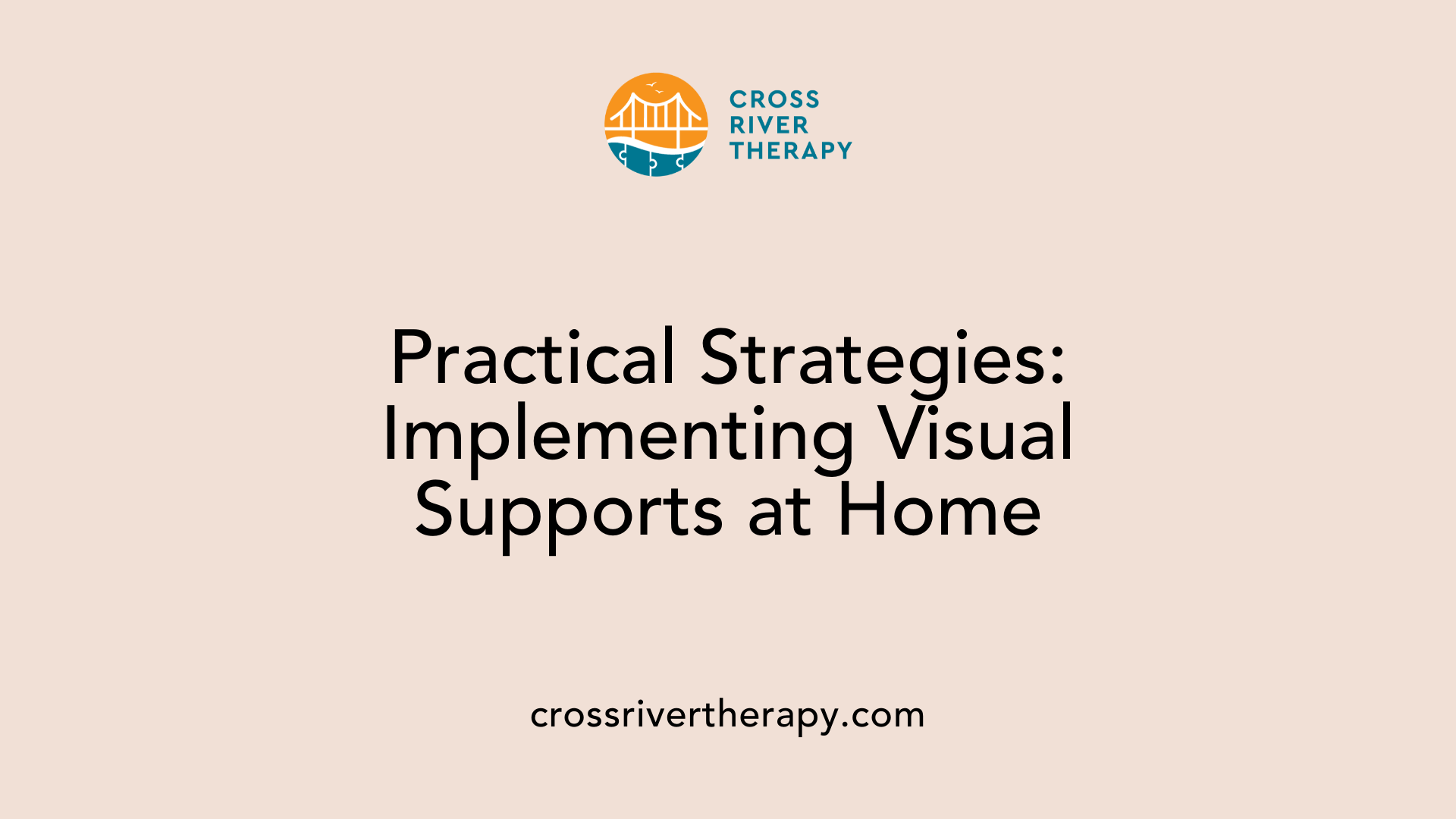The Role of Visual Cues in ABA Therapy Language Development
Unveiling the Power of Visual Cues in Enhancing Language Skills
Introduction
In the realm of Applied Behavior Analysis (ABA) therapy, visual cues have emerged as powerful tools that significantly facilitate language development, especially for children with Autism Spectrum Disorder (ASD) and other language-related challenges. By incorporating visual supports into therapeutic sessions, ABA therapy aims to enhance communication, understanding, and social interaction. This article dissects the role of visual cues, exploring various types and practical applications to provide caregivers and therapists with a comprehensive understanding of their profound impact.
Understanding Visual Cues in ABA Therapy

What are visual cues?
Visual cues are tangible objects, images, symbols, or written words designed to relay information that helps a child learn routines, activities, or behaviors. These cues assist in developing new skills and fostering greater independence.
Types of visual cues
Different types of visual cues serve specific purposes, including:
- Choice Boards: Display options available to the child.
- Communication Cues: Aid in expressing emotions and needs.
- Environmental Cues: Indicate expected behaviors in various settings.
- Labels: Organize spaces and tasks.
- Visual Directions: Outline steps needed to complete tasks.
How do visual cues aid in ABA therapy?
In Applied Behavior Analysis (ABA) therapy, visual cues are essential for language development. They provide structured and clear visual signals, enabling children, especially those with Autism Spectrum Disorder (ASD), to navigate their environments more effectively. Visual supports like schedules and choice boards help clarify expectations and routines, which can significantly reduce anxiety related to transitions between activities.
Promoting independence through visual supports
Visual supports also play an important role in fostering independence. By using tools that cater to the visual learning styles of many children with ASD, such as picture cards for communication and visual schedules for activity sequences, these cues help enhance both comprehension and self-reliance. This approach empowers children to understand and express their needs while learning to manage tasks autonomously, a crucial step in their overall development.
Types of Visual Supports in Enhancing Communication

What types of visual supports are used to enhance communication skills in children with autism?
Visual supports play a crucial role in enhancing communication skills for children with autism. They come in various forms, enabling tailored support based on individual needs. Here are some widely used types:
- Picture Exchange Communication Systems (PECS): Allow children to communicate their needs by exchanging pictures.
- Visual Schedules: Help children understand daily routines and reduce anxiety related to transitions.
- Social Stories: Provide narratives that outline expected behaviors and social scenarios.
- Choice Boards: Offer visual options to facilitate decision-making and expression of preferences.
- Video Modeling: Demonstrates desired behaviors through recorded video examples, aiding understanding.
Other examples include tactile symbols, photographs, and written words. These tools can help create a structured environment, promote independence, and provide clear visual prompts.
Applications in therapy
In therapy sessions, visual supports are integral for effective communication. They foster both expressive and receptive language skills through:
- First-Then Boards: Clarify sequences of activities, helping children anticipate what comes next.
- Emotion Thermometers: Enable children to express feelings, enhancing emotional communication.
- Visual Cues and Prompts: Guide children in understanding tasks and behavioral expectations.
The consistency of these tools across therapy and home settings can significantly improve understanding and engagement. Ultimately, visual supports not only assist with language development but also promote independence and less anxiety in children with autism.
The Therapeutic Benefits and Effectiveness of Visual Aids

Benefits of visual aids
Visual aids play a significant role in therapeutic settings for children, especially those with language disorders. They enhance communication by providing alternative means of expression, effectively bridging gaps in understanding. For children with autism spectrum disorder (ASD) and developmental language disorder (DLD), visual supports such as picture cards and visual schedules help in expressing needs and managing emotions. This creates a more relaxing environment, reducing frustration and anxiety.
Visual cues help to structure daily routines, offering clear signals about upcoming activities. By doing so, they diminish anxiety related to transitions, empowering children to know what to expect. Consistent exposure to these tools strengthens understanding and reinforces communication skills. As children move through progressively complex visual aids—from concrete visuals to abstract concepts—they build confidence and comprehension.
Moreover, visual aids engage children during therapy sessions. When they can visually track their progress, children become more motivated, facilitating effective participation in learning activities.
Impact on language disorders
The impact of visual aids on language disorders is profound. Research indicates that these supports are particularly beneficial for children with DLD and those on the autism spectrum. Visual aids help produce semantic representations, which are essential for language acquisition.
Studies show that children with ASD and DLD who are exposed to visual input often outperform their peers who do not utilize such cues. In particular, the combination of visual and verbal input during language learning tasks has been shown to yield better outcomes, especially when verbal demands are kept low.
Using tools such as Yes/No Boards helps children respond to questions effectively, while visual supports like Smash Mats enhance language production by encouraging more extended utterances. These elements of visual therapy offer structured frameworks that cater to various communicative functions, promoting not just comprehension but also expression.
In summary, visual aids significantly improve communication and language development for children with language disorders, supporting their overall learning journey.
Evidence-Based Approaches to Visual Cues in ABA

What evidence-based practices relate to the use of visual cues in ABA therapy?
Visual cues are grounded in effective educational strategies that greatly benefit children, especially those with Autism Spectrum Disorder (ASD). Research shows that incorporating visual supports—such as visual schedules and choice boards—clarifies expectations and enhances understanding of daily routines. These methods are categorized into low-tech options, like simple pictures and written instructions, and high-tech tools, which can include tablets or structured communication devices.
Visual supports are crucial because they help in several key areas:
- Reducing Anxiety: Visual cues provide a clear structure, lowering stress levels associated with transitions and changes.
- Improving On-Task Behavior: Children using visual aids demonstrate significantly higher engagement rates during activities.
- Enhancing Social Skills: The use of visual cues encourages better interactions among peers, fostering cooperation and joint activities.
Studies consistently affirm that individualized visual materials tailored to specific learner needs support communication and learning effectively. Systematic assessment of a child's unique requirements allows for the development of visual tools that are more likely to enhance their educational experience.
Best practices in implementation
When implementing visual cues in ABA therapy, consider the following best practices:
- Begin with Simple Tasks: Start small to build confidence and gradually introduce more complex visual supports.
- Be Consistent and Patient: Regular use of visual aids promotes familiarity, which can significantly enhance understanding over time.
- Utilize Reinforcement: Positive reinforcement when tasks are completed successfully encourages further engagement with visual cues.
By following these practices, caregivers and educators can foster increased independence and communication skills in children with ASD, ultimately enhancing their overall learning and social interaction experiences.
Practical Strategies for Using Visual Supports at Home

How can visual supports be implemented at home to improve language acquisition in children?
Parents and caregivers can significantly enhance language acquisition in children by effectively implementing visual supports at home. One effective strategy is using labeled items, such as labeling everyday objects with their names. This not only aids in vocabulary expansion but also fosters recognition and independent retrieval of words.
Visual schedules are another valuable tool. These can be simple daily routines depicted through pictures or drawings, helping children anticipate transitions and stay organized. Incorporating tools like timers or ‘Go’ signs can add structure, particularly during chaotic activities.
Communication tools such as flashcards or the Picture Exchange Communication System (PECS) can also be explored. Providing visuals to depict emotions or needs helps children express themselves more effectively and encourages verbal communication.
Enhancing language acquisition outside therapy
Using visuals for choice-making can promote independence, allowing children to select activities or express preferences. For instance, offering visual choices during snack time can encourage children to communicate their desires more freely. Moreover, creating a supportive environment can involve social stories to illustrate scenarios and expected behaviors, reducing anxiety around new situations.
By presenting visual aids, such as photos or drawings, consistently and accessibly, parents can help reinforce understanding and enhance engagement. Repetition and familiarity with these tools play a crucial role in the child's language development journey.
Visual Cues and Learning Outcomes in ABA Therapy
What is the relationship between visual cues and learning outcomes in children undergoing ABA therapy?
The relationship between visual cues and learning outcomes in children undergoing ABA therapy is significant. Visual cues enhance understanding and provide crucial structure, especially for children with autism. Many of these children face challenges in attentional control and multisensory integration, which may hinder their responsiveness to visual stimuli when compared to neurotypical peers.
However, research supports that effective prompting strategies, particularly those incorporating visual cues, are essential within ABA therapy. These prompts guide children towards desired behaviors and improve skill acquisition. For instance, visual supports like picture schedules and choice boards not only clarify expectations but also promote engagement during learning activities.
Studies indicate that the use of visual cues, alongside other prompting methods, can effectively reduce problem behaviors and enhance educational outcomes. This correlation underscores the importance of tailoring visual cues to meet each child's unique needs.
Research insights
Research has shown that children with autism can achieve positive learning outcomes through targeted visual supports. A meta-analysis has highlighted that comprehensive ABA interventions yield significant progress in language development and adaptive skills for about 90% of participants, particularly when caregivers are actively involved.
Additionally, visual cues used within structured activities have demonstrated enhancements in peer engagement among children with autism. By fostering cooperation and joint attention through visual aids, therapeutic strategies can effectively support the development of both social and communicative skills.
Overall, while challenges exist, the thoughtful integration of visual cues into ABA therapy can promote independent learning and facilitate meaningful growth in children, harnessing their potential to thrive.
Navigating Behavioral Expectations with Visual Aids
Role of Visual Cues in Understanding Behavior
Visual cues play a significant role in helping children, especially those on the autism spectrum, comprehend expected behaviors in various settings. By utilizing environmental cues and visual rules, caregivers and educators can clarify behavioral expectations. This enhances the child’s ability to navigate social situations while reducing anxiety related to uncertainty in new environments.
Tools Like Visual Rules and Behavior Charts
Tools such as visual rules and behavior charts serve as effective supports in reinforcing desired behaviors. Visual rules provide clear, simplistic guidelines that children can refer to, promoting better decision-making. Meanwhile, behavior charts visualize progress by tracking behaviors over time, further encouraging compliance and engagement with tasks. These resources not only make expectations tangible but also empower children with a clearer understanding of the consequences of their actions.
| Tool | Purpose | Benefits |
|---|---|---|
| Visual Rules | Clarify behavior expectations | Reduces anxiety and clarifies tasks |
| Behavior Charts | Track behaviors and progress | Motivates positive behavior change |
| Visual Schedules | Outline daily routines | Enhances understanding and reduces transition anxiety |
| Communication Aids | Facilitate expression of needs and feelings | Bridges communication gaps between children and caregivers |
The Role of Visual Aids in Enhancing Social Skills
How do visual supports facilitate social interaction?
Visual aids play a significant role in improving social interactions for children, particularly those with autism spectrum disorder (ASD). By utilizing tools such as picture schedules and communication boards, children can better express their needs and emotions, bridging the communication gap with peers and caregivers. This enhanced expression fosters cooperative play and helps them navigate social situations more effectively.
What are the benefits of using visual cues in social settings?
When visual supports are incorporated into social settings, they promote mutual engagement among children. For instance, instructional packages that include visual cues, prompting, and feedback have been shown to increase cooperation between children with ASD. These structured activities not only build social skills but also encourage joint attention and interaction, crucial elements for developing relationships.
Using visual cues consistently helps children understand expectations during social interactions, reducing anxiety and enhancing their participation in group activities.
Integrating Visual Supports Consistently Across Settings
Collaboration between therapists and caregivers
To maximize the effectiveness of visual supports, it’s crucial for therapists and caregivers to work together. When both parties share knowledge about the visual aids being used, they ensure a cohesive approach. Caregivers can reinforce strategies at home, while therapists can provide insights and adjustments based on observations in various environments. This partnership helps create a consistency that children thrive on.
Consistency in therapy and daily life
Consistency is key when integrating visual supports. Using similar visual cues in therapy sessions and everyday activities reduces confusion for children, fostering a clearer understanding of expectations. This predictability promotes their independence.
Making visual supports readily available in both contexts facilitates their use, allowing children to navigate their routines with confidence. Regular reinforcement of these cues across settings significantly enhances their overall efficacy.
Tools and Techniques: Exploring Specific Visual Aids
Specific visual tools like PECS and visual schedules
Visual supports play an essential role in the development and learning of children with autism and language disorders. One of the most notable tools is the Picture Exchange Communication System (PECS), designed for nonverbal children. PECS allows kids to convey their needs by using picture cards, effectively bridging the communication gap and aiding in language development.
Another crucial visual aid is the visual schedule, consisting of photographs or written words that outline the day's activities. This not only helps children understand what’s coming next but also reduces anxiety during transitions, enabling smoother interactions.
Examples of effective aids
Several effective aids can enhance communication and understanding, such as:
- Yes/No Boards: Designed for emerging communicators, these visual aids allow children to express simple answers and engage in basic conversations.
- Listening Charts: These provide visual prompts for understanding spoken language by combining auditory input with visual representation.
- Smash Mats and Topic Trees: These tools help expand utterance lengths and maintain conversation relevance, supporting language production.
Utilizing these specific visual aids consistently can markedly improve engagement and communication abilities in children.
Developing Independence Through Gradual Fading of Cues
What are Fading Strategies in ABA?
Fading strategies in Applied Behavior Analysis (ABA) play a critical role in teaching individuals, especially those with autism, to rely less on prompts over time. The process involves gradually reducing the amount or intensity of support as the learner becomes more skilled at the task. Initially, a child may require full support through visual cues, but as they master the skill, those cues are systematically faded out. This approach encourages self-reliance while still allowing for guided learning in the early stages.
How Does Fading Enhance Autonomy in Learners?
The ultimate goal of fading prompts is to develop autonomy in learners. By transitioning from dependence on cues to independent completion of tasks, children become more empowered. Here are some benefits of this approach:
- Increased Confidence: As children learn to perform tasks without assistance, their self-esteem gets a boost.
- Skill Retention: Gradual fading reinforces the learned skills, improving long-term retention.
- Adaptability: Developing independence allows learners to apply skills in new contexts, enhancing their overall adaptability.
Fading techniques, when used properly, can effectively support children with autism and language disorders, promoting their independence and confidence in various activities.
Conclusion
In summary, the integration of visual cues within Applied Behavior Analysis (ABA) therapy represents a dynamic approach to enhancing language development among children with autism and language disorders. By leveraging visual supports, therapists and caregivers can create environments that foster communication, independence, and social interaction. This multifaceted strategy not only equips children with the necessary tools for improved comprehension and language skills but also empowers them to engage actively in their daily lives. As research continues to underpin the success of visual aids, their role in ABA therapy remains indispensable, helping countless children thrive in their developmental journey.
References
- [PDF] What are Visual Cues? - AFIRM |
- Using Visual Supports in Therapy Sessions for Children with Autism
- Visual and verbal semantic productions in children with ASD, DLD ...
- What Are Prompts in ABA? Understanding Their Role and Importance
- Visual Supports for Autism: What are the Benefits?
- [PDF] The Effects of Visual Cues, Prompting, and Feedback within Activity ...
- Use of a Visual Graphic Language System to Support ...
- How to Use Visual Supports at Home for Language Development



